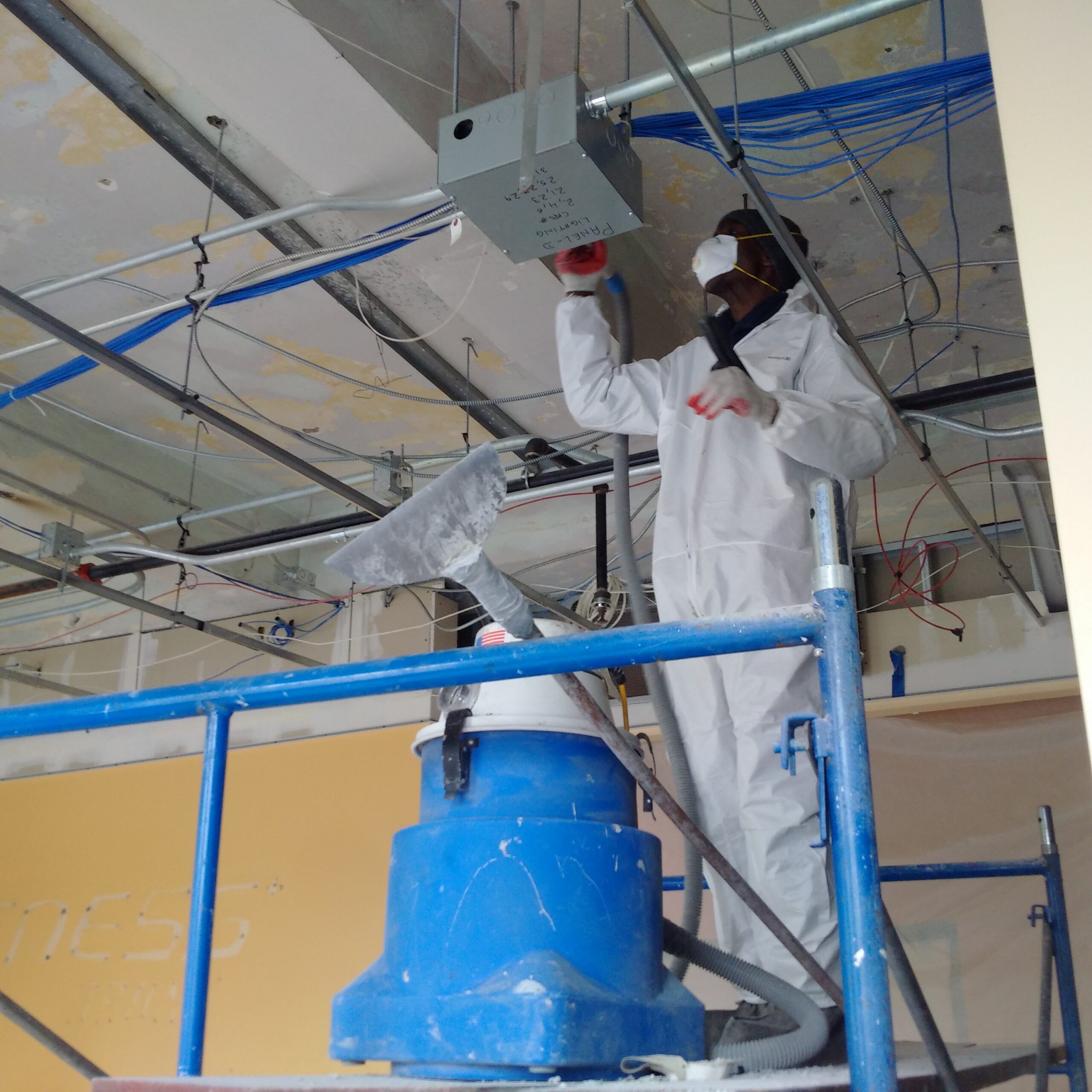Trusted Lead Paint Removal Company-- NYC's Premier Lead Reduction Service
Trusted Lead Paint Removal Company-- NYC's Premier Lead Reduction Service
Blog Article
Finest Practices for Ensuring Safe and Detailed Lead Infraction Abatement
Resolving lead offense reduction requires a multi-faceted method to make certain both safety and conformity. It's the last clearance process, including thorough examinations and research laboratory testing, that truly verifies a lead-free environment, guaranteeing lasting security. How do these practices adjoin to guarantee extensive lead abatement?

Initial Analysis
Performing an initial assessment is an essential primary step in lead offense abatement. This phase includes a detailed analysis of the residential or commercial property to recognize the existence, degree, and specific places of lead-based risks. Qualified specialists, such as licensed lead assessors or run the risk of assessors, ought to carry out a thorough website inspection, using tools like X-ray fluorescence (XRF) analyzers to properly find and gauge lead focus in paint, dirt, soil, and water.
The assessment must likewise consist of an evaluation of the building's background, previous reports, and any kind of grievances or health concerns reported by occupants - Lead Removal Contractors. Documenting the findings thoroughly is essential, as these documents form the basis for creating an efficient abatement approach. A detailed assessment likewise entails tasting and research laboratory evaluation, which are critical to validate the existence of lead and guide subsequent activities
In addition, it is essential to communicate the results transparently to all stakeholders, consisting of property owners, lessees, and governing authorities. By guaranteeing that the initial analysis is performed with accuracy and rigor, specialists can lay a solid foundation for a targeted and reliable lead abatement process, ultimately guarding public health and wellness and making sure conformity with regulatory requirements.
Correct Containment
Proper containment is crucial to avoid the spread of lead impurities throughout abatement tasks. Effectively managing control minimizes the danger of lead dirt and particles moving to non-work areas, therefore protecting both the environment and individuals outside the prompt work zone.

Normal evaluations of the containment location are required to inspect for violations or weak points in the barrier. Any recognized concerns must be quickly resolved to maintain the integrity of the control. By adhering to these methods, abatement jobs can successfully manage lead contamination and reduce connected health and wellness threats.
Employee Protection
Making sure worker protection is critical throughout lead reduction projects to stop job-related exposure to hazardous lead particles. Essential steps include the usage of individual protective equipment (PPE) such as respirators, gloves, and full-body suits especially created to block lead dust and fumes. Workers need to undertake extensive training on the appropriate usage and upkeep of PPE, including in shape screening for respirators to ensure optimum efficiency.
Engineering controls, such as neighborhood exhaust air flow systems, are essential in lessening air-borne lead concentrations in the workplace. Administrative controls must additionally be implemented, a knockout post consisting of limiting the duration of direct exposure and turning employees to decrease individual direct exposure times. Normal medical surveillance and biological surveillance are essential for early discovery of lead absorption, allowing prompt intervention and treatment.
Moreover, establishing a decontamination procedure is crucial. Workers need to follow strict purification procedures before breaks and at the end of their shift to stop lead dust from being brought outside the workspace. This consists of detailed hand and face cleaning with lead-specific cleaning representatives and transforming out of infected garments.
Careful Clean-up
Preserving a secure work setting prolongs past worker security and encompasses thorough clean-up to ensure lead particles are thoroughly gotten rid of from the site. The procedure of thorough cleaning is critical in preventing the recontamination of the abated location and securing both present and future owners.
To attain an extensive cleaning, all work areas must be methodically sanitized. This includes the usage of specialized HEPA (High-Efficiency Particulate Air) vacuum and wet-wiping techniques to capture and remove fine lead dust that may have chosen surfaces. It is crucial to cleanse all straight surfaces, including floorings, window sills, and kitchen counters, along with upright surfaces that may have entraped lead bits.
Employees should put on proper personal protective equipment (PPE) throughout clean-up to avoid direct exposure to recurring lead dust. Made use of cleansing materials such as wipes, sponges, and wipe heads need to be gotten rid of in conformity with dangerous waste disposal regulations.

Final Clearance
Last clearance is the vital ending phase of lead abatement that figures out whether the website is secure for reoccupation. This crucial step involves comprehensive inspection and screening to validate that all lead threats have actually been properly removed.

Final clearance testing not just shields future owners but additionally ensures conformity with local, state, and federal guidelines. Furthermore, it functions as a documented recognition of the reduction contractor's adherence to market Read Full Article ideal techniques. Ensuring an extensive and successful final clearance is crucial in securing public health and promoting trust in the reduction process.
Verdict
Guaranteeing secure and comprehensive lead offense abatement necessitates a multifaceted technique incorporating preliminary evaluations with sophisticated detection approaches, efficient containment strategies, rigorous worker security protocols, and meticulous cleaning procedures. The last clearance stage, featuring thorough inspections and laboratory testing, is vital to validate conformity with EPA requirements. Adherence to these ideal methods guarantees a safe environment for residents, mitigates health risks, and upholds regulative demands, thereby promoting public health and wellness and security in lead-affected locations.
Report this page